The History of Wine Influencers — Part 1
 Recently, in the wake of online discussions of “wine influencers” after this story in the San Francisco Chronicle hit, one young wine influencer took issue with my own response to the Chronicle article and took to Twitter to explained to me the history of wine Influencers this way:
Recently, in the wake of online discussions of “wine influencers” after this story in the San Francisco Chronicle hit, one young wine influencer took issue with my own response to the Chronicle article and took to Twitter to explained to me the history of wine Influencers this way:
“The wine Influencer isn’t new – the first ones were old white men without pretty pictures who wrote about wine in inaccessible language meant to stave off the common public- but they got the prestige of ‘critic’.”
The dismissive young Wine Influencer who does in fact have lots of pretty pictures in their portfolio of educational missives didn’t name names of those they accused of being merely old, white, male, bad prose stylists and concerned that the “common public” come nowhere near their job or their wine.
It got me thinking.
Surely these early “influencers” had more going for them than being bad writers. They must have been working to do something more than the dirty masses from invading the world of wine.
Was there really more than being just old, white, male, having an inaccessible writing style and a desire to keep out the “common public” when it comes to the likes of Hugh Johnson, Stephen Spurrier, Bob Thompson, Dan Berger, Eric Asimov, Oz Clarke, Gerald Asher, Jerry Mead, Steve Heimoff, James Halliday, Frank Prial, James Laube, Michael Broadbent, Robert Finigan, Clive Coates, Matt Kramer, and Edward Penning-Rowsell…to name just a few.
Let’s take a look a look at this motley crew of elitists with sloppy pens and see if we can find any redeeming value in them and their work.
HUGH JOHNSON
 Easily among the most prolific wine writers to ever breath and the author of, among many other things, Hugh Johnson is responsible for The Story of Wine, perhaps the most accessible history of wine ever written and made into a television series. He authored The World Atlas of Wine in numerous editions. He is the author of God knows how man editions (21?) of The Pocket Book of Wine. His influence in bringing people to wine and educating them can’t be calculated. Millions upon millions of his books have been sold and read and re-read. He is perphas the greatest living writer and a treasure to the world of wine. But, it’s true he did get old. He is white and he is a he. So, let’s dismiss him?
Easily among the most prolific wine writers to ever breath and the author of, among many other things, Hugh Johnson is responsible for The Story of Wine, perhaps the most accessible history of wine ever written and made into a television series. He authored The World Atlas of Wine in numerous editions. He is the author of God knows how man editions (21?) of The Pocket Book of Wine. His influence in bringing people to wine and educating them can’t be calculated. Millions upon millions of his books have been sold and read and re-read. He is perphas the greatest living writer and a treasure to the world of wine. But, it’s true he did get old. He is white and he is a he. So, let’s dismiss him?
STEVEN SPURRIER
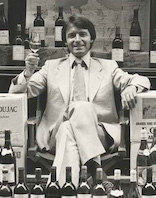 Englishman Steven Spurrier was the man responsible for putting California wine on the map via his historic 1976 Tasting of Paris when white and red Californian wines were judged by French experts to be superior in a lineup of French and American wines. This effort alone by Spurrier is likely to have brought tens of millions of people to enjoy California wine. But there’s more. He wrote The Academie du Vin Concise Guide to French Country Wines, Wine—A Way of Life, Academie du Vin Wine Course and numerous articles for a slew of general and specialist publications. His recent passing brought out innumerable tributes and the universal conclusion that he was a gentleman and a mentor to many. But…White! Male! Nevermind.
Englishman Steven Spurrier was the man responsible for putting California wine on the map via his historic 1976 Tasting of Paris when white and red Californian wines were judged by French experts to be superior in a lineup of French and American wines. This effort alone by Spurrier is likely to have brought tens of millions of people to enjoy California wine. But there’s more. He wrote The Academie du Vin Concise Guide to French Country Wines, Wine—A Way of Life, Academie du Vin Wine Course and numerous articles for a slew of general and specialist publications. His recent passing brought out innumerable tributes and the universal conclusion that he was a gentleman and a mentor to many. But…White! Male! Nevermind.
BOB THOMPSON
 Bob Thompson began his career in wine in the 1960s and rose to fame on the back of his writing, particularly his books, The California Wine Book, Notes on a California Cellarbook and The Wine Atlas of California and the Pacific Northwest. Wikipedia reminds us that he was described by Frank Prial as “one of California’s foremost wine writers” and “the sage of St. Helena”, and by Steve Heimoff as “the dean of California wine writers”. I met Bob a few times and talked with him a number of times when he was writing for the San Francisco Examiner. He was always a treat and always very helpful. He was always generous with me, but it remains true he was white and male and is today old, so I suppose it all doesn’t matter.
Bob Thompson began his career in wine in the 1960s and rose to fame on the back of his writing, particularly his books, The California Wine Book, Notes on a California Cellarbook and The Wine Atlas of California and the Pacific Northwest. Wikipedia reminds us that he was described by Frank Prial as “one of California’s foremost wine writers” and “the sage of St. Helena”, and by Steve Heimoff as “the dean of California wine writers”. I met Bob a few times and talked with him a number of times when he was writing for the San Francisco Examiner. He was always a treat and always very helpful. He was always generous with me, but it remains true he was white and male and is today old, so I suppose it all doesn’t matter.
DAN BERGER
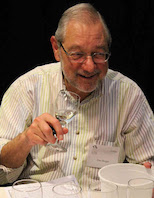 Originally a local news and sports writer, Dan Berger continues to write today not only his long-standing newsletter Vintage Experiences, but as a wine columnist—a profession he has engaged in for decades. Moreover, he is perhaps the most experienced wine judge in the United States today. Besides having educated millions on a weekly basis, Dan is and has been one of the greatest champions of not-so-well-known grape varieties and wine regions. But what sets him apart more than anything is his journalistic approach to wine writing and the honesty with which he reports the facts and his opinion. I count him as a friend and one of America’s greatest living wine writers. His influence can’t be underestimated. But…sorry…white.
Originally a local news and sports writer, Dan Berger continues to write today not only his long-standing newsletter Vintage Experiences, but as a wine columnist—a profession he has engaged in for decades. Moreover, he is perhaps the most experienced wine judge in the United States today. Besides having educated millions on a weekly basis, Dan is and has been one of the greatest champions of not-so-well-known grape varieties and wine regions. But what sets him apart more than anything is his journalistic approach to wine writing and the honesty with which he reports the facts and his opinion. I count him as a friend and one of America’s greatest living wine writers. His influence can’t be underestimated. But…sorry…white.
ERIC ASIMOV
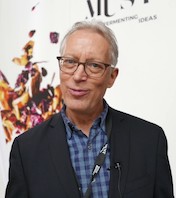 Eric Asimov began writing about wine for the New York Times in 1992. He went on after that to take over the full-time chief wine critic duties at The Paper of Record in 2004. Prior to writing about wine Eric was a national news editor at the Times. Eric has distinguished himself a wine writer with his focus on educating his readers and focusing on accessible, moderately priced wines. His training as a reporter is always on full display in his columns and it is fair to say that today Eric has become the most widely read wine writer in America. But, Eric is a male…so, unfortunately, there’s that.
Eric Asimov began writing about wine for the New York Times in 1992. He went on after that to take over the full-time chief wine critic duties at The Paper of Record in 2004. Prior to writing about wine Eric was a national news editor at the Times. Eric has distinguished himself a wine writer with his focus on educating his readers and focusing on accessible, moderately priced wines. His training as a reporter is always on full display in his columns and it is fair to say that today Eric has become the most widely read wine writer in America. But, Eric is a male…so, unfortunately, there’s that.
OZ CLARKE
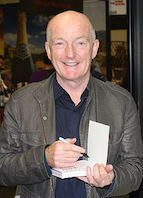 An actor by early profession, Clarke transitioned into wine education and writing. He first began writing at the Daily Telegraph and the Sunday Express in England. Oz has been writing about wine now for upwards of four decades and is recognized as one of the globe’s greatest wine educators. He has written more than 40 books and countless articles in numerous publications. It’s fair to say that few if any wine writers have educated more Englanders than he. Oz remains a prolific writer today. It is unquestionable that he is recognized as one of the most influential wine writers of the past 50 years. His is however, I regret to say, white.
An actor by early profession, Clarke transitioned into wine education and writing. He first began writing at the Daily Telegraph and the Sunday Express in England. Oz has been writing about wine now for upwards of four decades and is recognized as one of the globe’s greatest wine educators. He has written more than 40 books and countless articles in numerous publications. It’s fair to say that few if any wine writers have educated more Englanders than he. Oz remains a prolific writer today. It is unquestionable that he is recognized as one of the most influential wine writers of the past 50 years. His is however, I regret to say, white.
GERALD ASHER
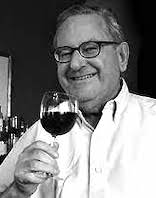 Ask anyone who has read widely on the subject of wine who is the best prose stylist they’ve ever read and it is likely they will name Gerald Asher. The long-time wine writer for Gourmet Magazine, Asher pushed out one beautiful, sensuous article after another. Gerald entered the wine industry at 18 in England working in retail. He would go on to own his own shop and work in other facets of the industry before taking up writing. His work in Gourmet Magazine was so heralded that it was republished in five different volumes: On Wine, Vineyard Tales, The Pleasures of Wine, A Vineyard in My Glass and A Carafé of Red. I own them all and treasure them. Gerald was the person who taught me, and many others too, just how beautiful and insightful wine writing could be. But, he can’t get past the fact that he is male and white.
Ask anyone who has read widely on the subject of wine who is the best prose stylist they’ve ever read and it is likely they will name Gerald Asher. The long-time wine writer for Gourmet Magazine, Asher pushed out one beautiful, sensuous article after another. Gerald entered the wine industry at 18 in England working in retail. He would go on to own his own shop and work in other facets of the industry before taking up writing. His work in Gourmet Magazine was so heralded that it was republished in five different volumes: On Wine, Vineyard Tales, The Pleasures of Wine, A Vineyard in My Glass and A Carafé of Red. I own them all and treasure them. Gerald was the person who taught me, and many others too, just how beautiful and insightful wine writing could be. But, he can’t get past the fact that he is male and white.
JERRY MEAD
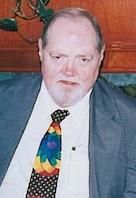 A lot of things can be said about Jerry Mead. But one of those things is not that he pulled his punches. At his death in 2000, Jerry was the author of the longest-running syndicated wine column in America. He was also the founder of numerous wine competitions in California. He also was the founder and publisher of The Wine Trader, a thick newsletter in which he stood up for consumers. In fact, of all Jerry’s accomplishments, perhaps the greatest was his steadfast opposition to absurd rules and regulations and laws that hindered consumers’ access to wine and vintners’ access to consumers. And he was absolutely ruthless with his eviscerating prose that took no prisons while naming names. I liked Jerry a lot. In fact, it was Jerry Mead who, when I called to ask how best to get into the wine PR business, pointed me to my first employer. I got the job in large part because he told her, “you should meet this guy.” But Jerry was very white and very male, so it may all be for naught.
A lot of things can be said about Jerry Mead. But one of those things is not that he pulled his punches. At his death in 2000, Jerry was the author of the longest-running syndicated wine column in America. He was also the founder of numerous wine competitions in California. He also was the founder and publisher of The Wine Trader, a thick newsletter in which he stood up for consumers. In fact, of all Jerry’s accomplishments, perhaps the greatest was his steadfast opposition to absurd rules and regulations and laws that hindered consumers’ access to wine and vintners’ access to consumers. And he was absolutely ruthless with his eviscerating prose that took no prisons while naming names. I liked Jerry a lot. In fact, it was Jerry Mead who, when I called to ask how best to get into the wine PR business, pointed me to my first employer. I got the job in large part because he told her, “you should meet this guy.” But Jerry was very white and very male, so it may all be for naught.
STEVE HEIMOFF
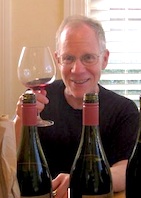 Between 1989 and 2014 when Steve wrote for the Wine Spectator and as Chief West Coast Wine Critic for the Wine Enthusiast, he rose to prominence based on an independent palate and a fierce devotion to the art of winemaking and honest reverence for those that made wine. His book A Wine Journey along the Russian River remains one of the best example of journalism and love story in one. When blogging took off, Steve jumped in with both feet and quickly became one of the best-read wine bloggers in the world, quickly understanding the style of blogging and the medium. I count Steven not only as one of the most influential writers of the past thirty years but also a friend. Though not in the business of wine writing today, were he to return it would be a gift to those who treasure reading good writing. However, I regret to inform you that Steve is male, white, and close to getting old.
Between 1989 and 2014 when Steve wrote for the Wine Spectator and as Chief West Coast Wine Critic for the Wine Enthusiast, he rose to prominence based on an independent palate and a fierce devotion to the art of winemaking and honest reverence for those that made wine. His book A Wine Journey along the Russian River remains one of the best example of journalism and love story in one. When blogging took off, Steve jumped in with both feet and quickly became one of the best-read wine bloggers in the world, quickly understanding the style of blogging and the medium. I count Steven not only as one of the most influential writers of the past thirty years but also a friend. Though not in the business of wine writing today, were he to return it would be a gift to those who treasure reading good writing. However, I regret to inform you that Steve is male, white, and close to getting old.
JAMES HALLIDAY
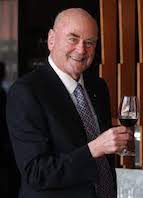 The Australian Halliday is widely and properly considered that island’s greatest wine writer. But he is more than this. Halliday is the author of nearly 50 books on wine but also is considered among the most important wine judges in Australia and the entire world. If there is an award or honor that Halliday has not been granted it likely hasn’t been created yet. Halliday is not a wine writer without practical experience. He founded and operated two wineries in Australia. But most importantly, he is an educator and this has been the focus of his wine writing that has allowed him to be so important in the lives of wine lovers not just across Australia but the world. But, alas, his accomplishments are marred by his light complexion and male-ness.
The Australian Halliday is widely and properly considered that island’s greatest wine writer. But he is more than this. Halliday is the author of nearly 50 books on wine but also is considered among the most important wine judges in Australia and the entire world. If there is an award or honor that Halliday has not been granted it likely hasn’t been created yet. Halliday is not a wine writer without practical experience. He founded and operated two wineries in Australia. But most importantly, he is an educator and this has been the focus of his wine writing that has allowed him to be so important in the lives of wine lovers not just across Australia but the world. But, alas, his accomplishments are marred by his light complexion and male-ness.
But wait there’s more whiteness, maleness and agedness, bad writing, and barring of the gates coming up in PART 2 of this post.

How old were these old coots when they first got published? And I add that Eric Asimov has the added misfortune of.being the nephew of one of the world’s great writers Isaac Asimov. Another now deceased white guy. I bet Isaac inspired a lot of youngsters to become writers of whatever they loved.
But the real sin, Donn, is he explicit contention that Eric and others like him are bad writers who write with the intent of barring the gates to common folk. It’s a vile charge.
James Halliday, a former attorney, is not only a wine author and columnist/journalist but a man blessed with the greatest palate I ever witnessed — and he has one of the finest memories in the industry. I have judged at 11 wine shows in Australia and Halliday was at probably all of them, often as chief judge (a major role Down Under). I saw him do feats of wine identification that simply defy explanation. Most people don’t believe what he does. One huge admirer of James was the late and very great Len Evans.
Dan,
I have never met Halliday and it’s a regret. I of course have read him and of him. It is an unmeasurable sin to write off him, you and others as nothing more than the kind of hack one influencer implies of him.
The insipid nature of the the title, or phrase, ‘Wine Influencer’, not to be confused with ‘Wine Critic’ leaves me scratching my head a bit. What does it even mean? I’ve always simply assumed that those who lay claim to this activity are simply wanting to get folks to drink this or that wine because THEY like this or that wine. Noble enough I guess, but what are they actually saying about the wines they are touting. For the most, those I’ve come across seem mostly ‘hat’ but not much ‘beef’ if I’m allowed such a metaphor. As a ‘Wine Judge’ at a local county fair, I have some understanding of what kind of effort it takes to make a judgement based on a fixed set of criteria and then to make notes that critique the wine, not to try and help sell a wine, but rather to provide insight to the wine makers to help them, in some small way, to make even better wine. I think ‘Wine Critics’ also offer this to the wine maker but, it would seem to me, “Wine Influencers’ don’t place much emphasis in this area..
The “wine influencer” speaks with the angry hyperbole of the righteous who lack perspective and knowledge. The really smart person knows what it is they do not know.
I would suggest that Hugh Johnson and the conspicuously missing Robert Parker along with Michael Broadbent have probably contributed more than the rest combined. Spurrier of course put the icing on the cake. The time was ripe and Americans were discovering the pleasures of food and wine in harmony…🍇
Dale, the list could have gone on much farther than it did and we could debate the meaning of the list. I was far more interested in demonstrating what real influence looks like as we as exposing small minds. That said, part 2 is coming tomorrow. It will add more to the list of folks who used their gender and whiteness to deter people from wine with terrible writing.
As far as gender is concerned women have on average more taste buds than men and finally we are seeing a long overdue growth in women winemakers. Describing wine is difficult at best as our palates are surprisingly different. Thus the use of specific adjectives etc. is really a moot and relatively useless connivance. Certainly broader terms in regard to general style in winemaking certainly is relevant. At the end of the day the worlds finest winemakers are those that know it is all about great fruit and allowing that fruit to become what it wants to be and generally staying out of the way for the most part..,
Sounds like “conservative” politics — uniformed strong opinions voice with certainty byt no bother to research. There were women involved in wine writing in the 1930’s and 40’s who wrote for national magazines (which were largely woman’s magazines). When Bob Thompson, one of the clearest, most accessible writers on any subject, began writing on wine he was young, no it old. Nothing he could do about being white. Ditto for Dan Berger, whose first wine article was a feature on the beginning Oregon wine industry in the mid-70’s for the Associated Press, a paragon of clear and concise writing. The wingnut call about cancel culture appears to have infected females interested in wine and especially in dissing old white guys who learned about wine many decades ago. Apologies for having helped make the current wine industry possible.
Bob Thompson was the first I read I believe in the late seventies.? A coffee table book he had as well. Aside from Jancis Robinson who I have met at McMinvilles IPNC. I was referring to women winemakers not writers. Too few of those as well…🍇🍷🥳
Invoking Jean-Baptiste Alphonse Karr’s epigram: “plus ça change, plus c’est la même chose”
(The more things change, the more they stay the same.)
1987. 2021. Can you tell the difference?
In his seminal 1987 two-part investigation, the late David Shaw shined a light on grifters seeking “free shit” and the existence of “pay for play” press coverage.
Excerpt from Los Angeles Times “Main News” Section
(August 23, 1987, Page A1ff):
“Wine Writers: Squeezing the Grape for News”(Part 1 of 2 Series)
URL: https://www.latimes.com/archives/la-xpm-1987-08-23-mn-3198-story.html
By David Shaw
Times Staff Writer
“Two years ago, Craig Goldwyn — publisher of International Wine Review magazine — spoke to a couple of East Coast audiences about people who write on wine for American newspapers and magazines.
“Goldwyn, who also writes a monthly wine column in the Washington Post, began by asking, ‘What is a wine writer?’ Then he answered his own question:
” ‘A wine writer is a physician or a lawyer with a bottle of wine and a typewriter, looking to see his or her name in print, looking for an invitation to a free lunch and a way to write off the wine cellar.’
Colman Andrews, who writes about wine for Los Angeles magazine, offered an even more acerbic observation in a recent interview:
” ‘Any jerk can call himself a wine critic and get published.’ “
Whose Matt Villano and who wants to tell him angry-white guy is taken?
The problem with Amber Lucas’s criticism (aka @amusedblog) is it’s patently racist. Amber comes from the generation that famously professes to be “born-this-way, so don’t judge me.” Yet, her very criticism is based on the immutable characteristics people are born with – namely, skin color and biological sex.
All of them are wonderful writers but it was Frank Prial that turned the key in my wine world. “His classic column, “The Best Bottle,” in which he suggested that the best bottle of wine he ever had might have been a jug of Almaden Mountain Chablis — because he shared it with his mates after a particularly grueling patrol with the Coast Guard”
That thought guides me today. Be humble. Appreciate what life affords you.
This woke generation’s real fear is a society built on meritocracy and hard work rather than identity politics
Ignorance is as ignorance tweets.
Thank you for one of the most refreshing reads in a long time in these insane times of “wokeness”!